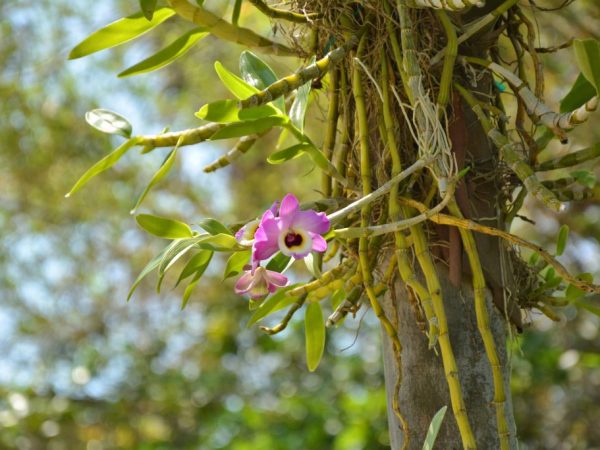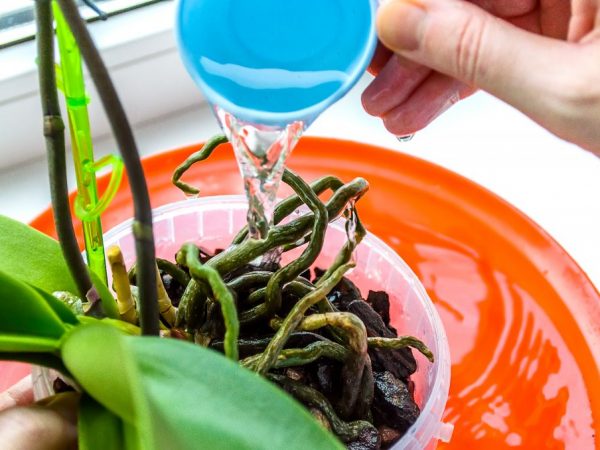Rules for growing orchids from Asia
Orchids from Asia are unusual plants. They grow in different climatic conditions, so they need special care and a longer adaptation period.

Rules for growing orchids from Asia
Phalaenopsis
One of the most beautiful and common varieties of Asian plants is the phalaenopsis orchid. It has a bright red color. Phalaenopsis has several types:
- Concorde. It is whimsical, requires special care and a greenhouse atmosphere.
- Red Buddha. The main advantage of this variety is an unlimited number of blooms.
- Red Dragon. It's a hybrid. It has a spotted color and belongs to mini-varieties.
- Red jaguar. He is also a hybrid, giant and extremely demanding.
Plant transplant
Typically, orchids are delivered in moss or ground made from coconut fiber. Orchid is a plant that is unpretentious to the soil in which it lives, but demanding of its quality. The owner must always water the flower on time so that the soil does not turn into stone: because of this, the plant may die.
It is better to replant the flower 1-2 weeks after purchase, so that it has time to adapt to new external conditions.
Stages of getting an orchid to a place

We sit in plastic dishes
Asian orchids are transplanted from moss to bark. Before the procedure, the moss is soaked so as not to damage the small roots of the plant and thereby not destroy it.
It is better to place the Asian orchid in one of the special solutions that will help it develop and strengthen it. The best drug is a biocomplex with microorganisms. It helps the plant adapt to new living conditions, protects the orchid from infections and diseases, and also makes the soil more useful.
The earth is soaked for about an hour so that the roots have time to absorb moisture and become more flexible for transplanting. The orchid itself is left in a container of liquid to draw even more water.
Next, the plastic container in which the flower was delivered from Asia is removed. To do this, carefully, so as not to hurt the root system, cut the container with scissors. Then the root is carefully cleaned of moss and excess dirt. In some places, you will have to cut off damaged and dried out areas. Places where something was cut are dried a little and treated with moss (it is a good natural antiseptic), and then sprinkled with activated carbon.
Accuracy is important here. You can not cut the roots more than necessary: this will kill the plant.
Soil for replanting orchids
The soil for the flower should contain coconut chips, pine bark, and an aerator such as perlite. The last component is needed for good air exchange in the ground.
The soil blanks are placed in a container wider than the intended pot: the components will swell.
The choice of pot size depends on the size of the plant's roots. As a rule, the diameter of the future flower house is from 9 to 13 cm.
Pieces of bark are placed in the bottom layer. The next step is to place the plant in the pot by spreading its roots. They are covered with a damp substrate.The roots will find their place in the soil on their own, so there is no need to shake it or try to tamp it. Sprinkle coconut chips on top of the soil.
Transplanted orchid care
After the soil dries out properly (it will take 2-3 days), the plant is watered by immersing it in water for half an hour. The level of soil moisture in the summer must be maintained at the proper level, since it is at this time of the year that plants give off a lot of water, and therefore require even more.
Output
Orchids from Asia are a great home decoration. They will fit into any interior. Difficulties arise only when adapting to the place. As a result, this is ideal for owners who work hard.


